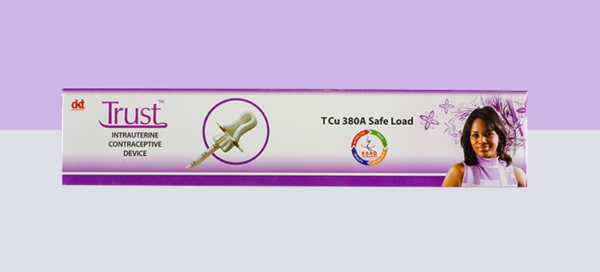Product Description

ABOUT SAFELOAD:
It’s a t-shaped piece of plastic that’s put in your uterus to block the sperms. This sounds weird, but it works like magic for three to twelve years depending on the type you get. And if you want to get pregnant, you just remove it at a health care provider, it’s that simple.
In case you are not comfortable with the IUD in the first three months of insertions you can easily change the method. Your health and your freedom are very important.
There are actually lots of great things that come in hand when using Family planning methods. We’re talking benefits.
- Easy to use with the no touch technique.
- Easy insertion and removal process with no harm.
- Reduces cramps.
- Long lasting protection with less efforts.
“IUDs hurts too much when inserting”
No. Not every woman gets pain on the insertion of the IUD.
Although there is a very small percentage of women who claim to get pain during the insertion. It’s important to know the biological differences, others may or may not get pain depending on their genetic makeup.
“IUDs causes cervical cancer”
It’s not true that IUDs causes cervical Cancer. The World Health Organization together with the Ministry of Health have confirmed that the IUDs are safe, so be glad and proud.
“IUDs causes Sterility”
It’s not true that IUDs make you infertile. IUDs are used numerously because they have no hormones. This means when you remove it you can get pregnant quickly than using other contraception methods.
- Does the IUD cause pelvic inflammatory disease (PID)?
Not really. The IUD does not cause Pelvic Inflammatory Diseases (PID).
- Can young women and older women use IUDs?
Yes. There is no age limit for IUDs. You can remove it after menopause usually within 12 months after your last menstruation.
- If a current IUD user has a sexually transmitted infection (STI) or has become at very high individual risk of becoming infected with an STI, should her IUD be removed?
Not necessary. If a woman catches STI after her IUD insertion, especially if she is not at risk of Pelvic Inflammatory Diseases because of the Intrauterine Device. She can keep rolling with the IUD while on treatment.
- Does the IUD make a woman infertile?
No. A woman can become pregnant ant time after the IUD is removed as quickly as a woman who has never used an IUD before, although fertility decreases as women get older.
- Can a woman who has never had a baby use an IUD?
Yes. Any woman can use an IUD if she has not yet conceived. It’s safe even for first time users.
- Can the IUD travel from the woman’s uterus to other parts of her body, such as her heart or her brain?
The IUD never travels to the heart, brain, or any other part of the body outside the abdomen, hilarious.
- Should a woman have a “rest period” after using her IUD for several years or after the IUD reaches its recommended time for removal?
Not really necessary. Removing the old IUD and immediately inserting a new one saves the risk for infections.
- Should antibiotics be routinely given before IUD insertion?
No, usually not. Antibiotics may be considered, however, in areas where STIs are common and STI screening is limited.
- Can IUD be inserted only during a woman’s monthly bleeding?
No. Though, inserting the IUD during her monthly bleeding may be a good time because she is not likely to be pregnant, and insertion may be easier. Well, not really as easy as you think unless it’s done by a medical professional.
- Do IUDs increase the risk of ectopic pregnancy?
No. On the contrary, it reduces the risk of ectopic pregnancy are rare among IUD users.

